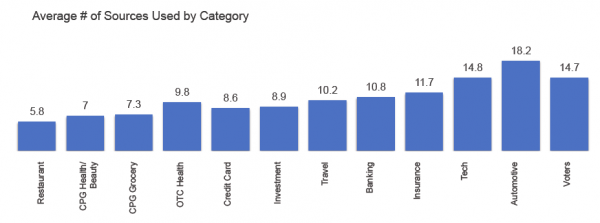
Content strategy and the customer journey
All the expert predictions for 2013 have been made and the team at Smart Insights has kindly done the legwork and boiled them down to two specific areas of digital marketing that the pundits generally agree will be big this year – content strategy and the customer journey.
The interesting thing is that both areas are fairly co-dependent – in fact they could be exploited as part of a fully integrated digital marketing strategy.
First up is our old friend content strategy.
Digital marketing has a habit of over-using terms until they lose all their meaning (see also ‘social media’ and ‘big data’) – and content strategy is well on this road.
It is normally understood as being analogous to the kind of editorial strategy a magazine might use – except that a fully formed digital content strategy should encompass site content, email marketing and social media. And of course, content itself could be text or video or user generated content like reviews or competition entries.
This approach is incredibly powerful – fresh, relevant content will help customers to buy your products but is also exactly the kind of content that Google, particularly post Panda and Penguin, loves to see.
For me, I think content strategy can also inform how we develop one-off campaigns – and I’m sure I’ll return to this theme later in the year. Essentially though we need to start thinking about audiences and content rather than reductively about channels and clicks.
The other area is the online customer journey.
At the heart of this is our old favourite, multi-channel attribution. Google’s research suggests that the customer journey and specifically the path to purchase is becoming more complex, taking longer and including more websites including social recommendations.
Google’s ZMOT study found that the average number of sources used for a purchase had doubled in a year, from 5.2 to 10.4 sources. Here for reference is the breakdown by category:
‘Last click wins’ has always been an inaccurate way to measure attribution, but it is becoming more useless than ever. It’s not only wrong but an increasingly dangerous strategy. The new game in town is about getting the first click, then using retargeting and email to bring your customer home.
The problem is that attribution modelling has not been an area of conspicuous success over the past few years. I remember Avinash Kaushik talking about some models that he had seen digital marketing agencies develop as “basically shit we made up”.
It is really helpful that Google is now rolling out the attribution modelling features of Google Analytics Premium to standard accounts. Also on the road map is a new feature where Google will create a custom attribution model for your business based on an analysis of your actual data. I’m not necessarily saying that Google’s algorithms will definitely come up with a better answer than a room of digital marketing planners (OK, to be honest I am!)
Anyway, getting a good model is only one part of the puzzle – once you have worked out how the channels interact, you can start to allocate budgets more efficiently across those channels. An important part of this will be optimising the customer journey across different devices as mobile and tablet usage continues to soar.
The final challenge will be a creative one – which brings us back to content strategy. Winning in this new landscape will require the ability to build engaging narratives that reflect the customer journey and stretch across platforms and channels. And to do this, we need to stop thinking in silos like search marketing, or social media, or email marketing, and start thinking holistically about digital marketing in the round.

